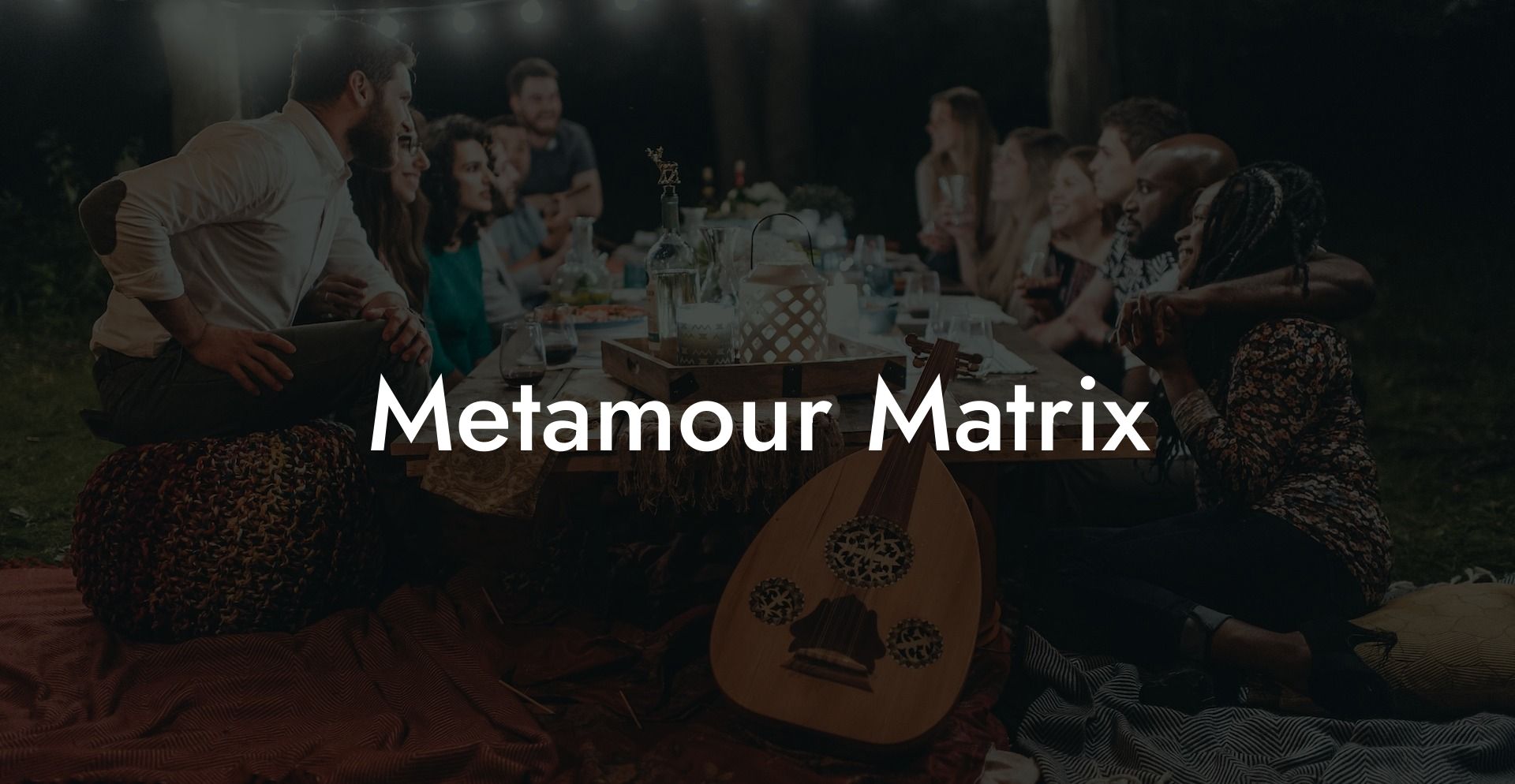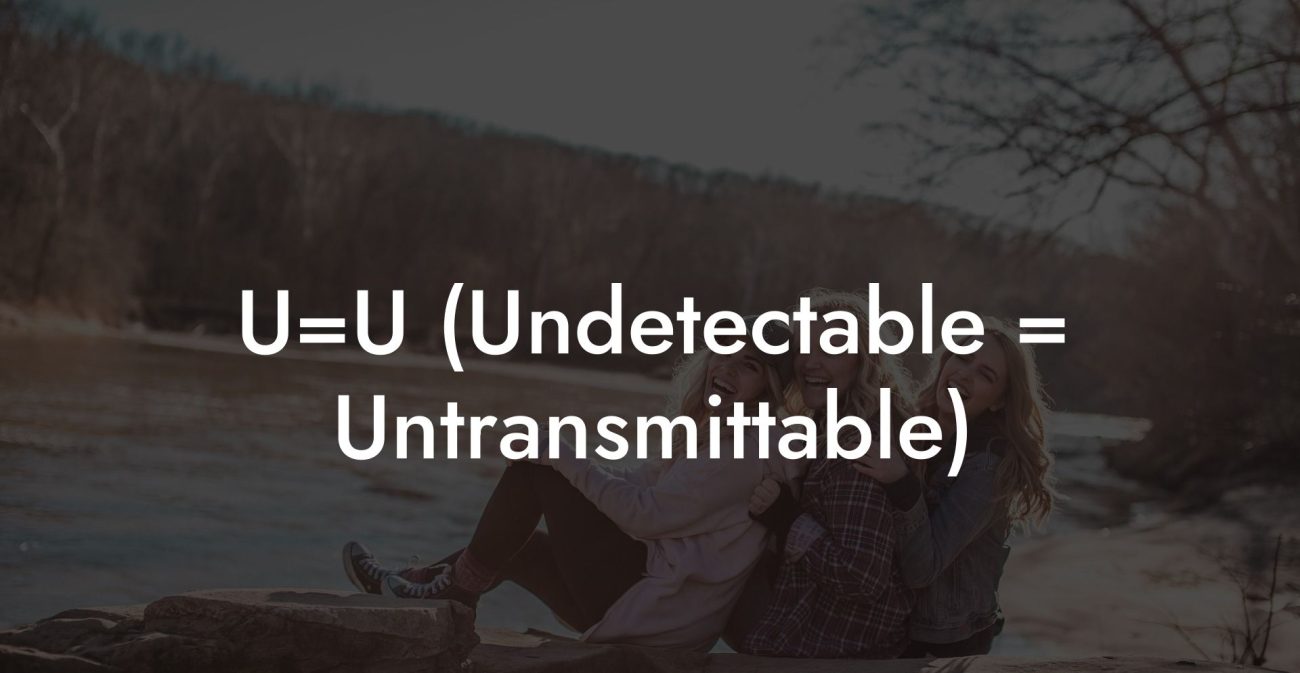Metamour Matrix

Imagine a dynamic, multidimensional network where every relationship is a node in an ever-evolving web, a living system where metamours are not isolated figures, but interconnected pieces of a grand emotional matrix. Welcome to Metamour Matrix, a transformative concept in ethical non monogamy that redefines how we understand and navigate the relationships of our partners. In a Metamour Matrix, the traditional view of the metamour as a rival or peripheral figure gives way to a collaborative ecosystem where each connection contributes to the overall health and vibrancy of the network. Get ready to explore a framework that celebrates interdependence, open communication, and the powerful synergy that arises when every bond is acknowledged as an integral part of the whole.
Quick Links to Useful Sections
- The Ethical Non Monogamy Term: Metamour Matrix
- What Is Metamour Matrix?
- Core Principles of Metamour Matrix
- A Quick Video Explanation
- Historical and Cultural Perspectives on Metamour Matrix
- Origins and Evolution of the Metamour Concept
- Cultural Shifts and Modern Understandings
- Everyday Dynamics of Metamour Matrix
- Building and Nurturing the Network
- Navigating Boundaries and Expectations
- Fostering a Culture of Empathy and Mutual Support
- Benefits of Embracing the Metamour Matrix
- Enhanced Emotional Resilience
- Deeper, More Transparent Communication
- Broadened Perspectives on Love and Connection
- Personal Empowerment and Self-Awareness
- Challenges of Metamour Matrix
- Managing Jealousy and Insecurity
- Balancing Interaction Levels
- Maintaining Boundaries in a Dynamic Network
- Navigating External Judgment and Societal Norms
- Frequently Asked Questions (FAQ)
- Resources and Community Support: Your Next Steps
The Ethical Non Monogamy Term: Metamour Matrix
What Is Metamour Matrix?
Metamour Matrix is a conceptual framework that reimagines the role of metamours in ethical non monogamy as interconnected nodes within a complex, supportive network. Instead of viewing the partner of your partner as a secondary or competing relationship, the Metamour Matrix emphasizes that every connection forms part of a larger, interdependent web of love and support. In this model, each metamour, whether you interact frequently or sporadically, plays a vital role in shaping the emotional ecosystem. The health of the network depends on open dialogue, mutual respect, and the willingness of all involved to see themselves as contributors to a collective whole.
In practice, the Metamour Matrix encourages you to foster relationships with your metamours that are built on collaboration and shared goals. It challenges you to move beyond jealousy and competition by embracing a perspective where the well-being of one partner uplifts the entire network. Through this lens, every metamour becomes a source of unique insight and support, a vital thread in the intricate tapestry of your collective love life.
Core Principles of Metamour Matrix
- Interconnectedness: Recognize that each metamour is an integral node in a larger network, where the strength of one relationship impacts the health of the entire system.
- Mutual Respect: Cultivate relationships based on understanding, empathy, and respect for each individual’s unique role within the network.
- Open Communication: Foster honest and ongoing dialogue with your partner and metamours to ensure transparency, clarity, and trust across the network.
- Collaborative Support: Emphasize the idea that supporting one another contributes to a collective resilience, when one connection thrives, it benefits the entire matrix.
- Adaptive Boundaries: Understand that personal needs and comfort levels can evolve, and be prepared to renegotiate boundaries to maintain a healthy, dynamic network.
- Empowerment Through Connection: View each metamour relationship as an opportunity for mutual growth and empowerment, where each member’s progress strengthens the overall structure.
- Holistic Integration: Integrate the emotional, intellectual, and sometimes practical aspects of each relationship to create a cohesive, supportive network.
A Quick Video Explanation

Historical and Cultural Perspectives on Metamour Matrix
Origins and Evolution of the Metamour Concept
The term “metamour” emerged with the rise of polyamory and ethical non monogamy as a way to articulate the relationship between partners who share a common connection to the same primary individual. Initially, metamour relationships were often shrouded in secrecy and stigma, framed by a culture that viewed them as competitive or secondary. However, as ethical non monogamy gained traction, early advocates began to challenge these negative stereotypes.
With time, the idea of a metamour evolved into something far more nuanced, a recognition that every relationship contributes to an interconnected web of support and love. The emergence of the Metamour Matrix concept marks a significant shift from isolated, competitive perceptions to an integrated approach where each connection is seen as an essential part of a collective whole. This evolution in terminology reflects a broader cultural movement towards embracing the complexity of modern relationships.
Cultural Shifts and Modern Understandings
In contemporary society, the rise of digital communication, social media, and global interconnectedness has transformed how we view relationships. Millennials and Gen-Z, in particular, are more open to reimagining traditional models of love and are eager to explore interconnected, non-hierarchical structures. The Metamour Matrix resonates with these generations because it aligns with their values of inclusivity, transparency, and mutual support.
Modern narratives now celebrate the idea that love is abundant and that the emotional well-being of one partner can enhance the entire network. Rather than compartmentalizing relationships, the Metamour Matrix encourages a holistic view, where empathy, open dialogue, and collective growth are prioritized over jealousy or rivalry. This cultural shift is paving the way for a more resilient and supportive approach to ethical non monogamy.
Everyday Dynamics of Metamour Matrix
Building and Nurturing the Network
In everyday life, implementing the Metamour Matrix involves actively engaging with all facets of your partner’s network. This means not only maintaining open lines of communication with your primary partner but also taking steps to establish respectful and supportive relationships with their other partners.
- Regular Group Conversations: Organize periodic meetings or casual gatherings with your metamours, creating opportunities for shared dialogue and mutual understanding.
- One-on-One Check-Ins: When appropriate, have individual conversations with your metamours to share feelings, clarify boundaries, and build personal connections.
- Collaborative Activities: Engage in group activities, whether it’s a dinner party, a creative project, or a social outing, that foster a sense of community and collective support.
- Digital Communication: Use group chats, shared calendars, or online forums to maintain ongoing, transparent communication across the network.
Navigating Boundaries and Expectations
A critical aspect of the Metamour Matrix is the establishment and continuous negotiation of boundaries. As relationships evolve, the needs and comfort levels of all parties may shift, necessitating regular updates to your collective agreements.
- Adaptive Boundaries: Recognize that boundaries are not fixed and must be renegotiated over time. Engage in honest discussions about what feels comfortable and adjust as necessary.
- Feedback Mechanisms: Create structured feedback loops where each member can express their needs and suggest adjustments, ensuring that the entire network remains harmonious.
- Clear Expectations: From the outset, define what level of interaction and emotional involvement is expected. Transparency in these expectations reduces the potential for misunderstandings.
Fostering a Culture of Empathy and Mutual Support
The success of the Metamour Matrix hinges on a culture of empathy, where every member values and supports the emotional well-being of the others. This approach transforms potential conflicts into opportunities for collective growth.
- Active Listening: Practice reflective listening during conversations to ensure that every partner’s perspective is understood and validated.
- Supportive Interactions: Celebrate each other’s successes and provide comfort during challenging times, reinforcing the idea that the network thrives on mutual care.
- Collaborative Problem-Solving: When conflicts arise, approach them as a group with a focus on finding solutions that benefit the entire network, rather than singling out individuals.
Benefits of Embracing the Metamour Matrix
Enhanced Emotional Resilience
One of the most significant benefits of the Metamour Matrix is its ability to create a resilient, interconnected support network. When every relationship contributes to the overall well-being of the group, you gain a robust safety net that can help you navigate life’s challenges.
- Collective Strength: A strong metamour network means that every partner’s support uplifts the entire group, making it easier to cope with stress and adversity.
- Mutual Growth: As each member of the network learns and evolves, their collective wisdom enhances the quality and depth of every relationship.
Deeper, More Transparent Communication
The emphasis on open dialogue within the Metamour Matrix leads to clearer, more effective communication. This transparency helps to build trust and prevents misunderstandings before they escalate.
- Improved Dialogue: Regular, honest conversations foster an environment where every partner feels comfortable expressing their needs and concerns.
- Constructive Conflict Resolution: Open communication ensures that conflicts are addressed promptly and resolved collaboratively, strengthening the entire network.
Broadened Perspectives on Love and Connection
Engaging in metamour relationships within a matrix encourages you to see love from a broader perspective. It challenges you to reconsider traditional ideas of exclusivity and competition, opening up new possibilities for empathy and connection.
- Diverse Insights: Interacting with multiple partners provides a variety of perspectives that can enrich your understanding of love and intimacy.
- Expanded Support: A well-integrated metamour network offers multiple sources of emotional support, creating a more balanced and fulfilling relational experience.
Personal Empowerment and Self-Awareness
By embracing the Metamour Matrix, you are encouraged to reflect on your own emotions and needs. This self-awareness not only strengthens your personal identity but also enhances your ability to contribute positively to the collective.
- Increased Self-Knowledge: Regular self-reflection helps you understand your own triggers, insecurities, and strengths, enabling you to navigate the network more confidently.
- Empowerment Through Agency: Recognizing that your partner’s love is abundant and that every relationship has value empowers you to invest in your own growth without fear of inadequacy.
Challenges of Metamour Matrix
Managing Jealousy and Insecurity
One of the common challenges in a metamour network is dealing with feelings of jealousy or insecurity. It can be difficult to reconcile the idea that your partner’s happiness with others does not detract from your own worth.
- Tip: Engage in honest self-reflection and communicate your feelings openly with your partner and metamours. This transparency helps to dissipate misunderstandings and build trust.
- Tip: Practice mindfulness and self-compassion to manage moments of insecurity and reinforce the idea that love is not a finite resource.
Balancing Interaction Levels
In a Metamour Matrix, the level of interaction with metamours can vary widely. Finding a balance that feels comfortable for everyone, especially if you prefer more or less frequent contact, can be challenging.
- Tip: Clearly define and regularly renegotiate the desired level of interaction with your metamours to ensure that your needs and comfort levels are respected.
- Tip: Use digital tools to facilitate communication and coordination, especially if physical proximity is an issue.
Maintaining Boundaries in a Dynamic Network
Adaptive boundaries are critical in a Metamour Matrix, but they require continuous attention and negotiation. As individuals evolve, what once worked may no longer be suitable, necessitating regular updates to your agreements.
- Tip: Schedule periodic boundary reviews with your partners and metamours to discuss any needed changes and ensure that everyone’s expectations remain aligned.
- Tip: Document your agreements in a shared space, so that changes can be tracked and respected over time.
Navigating External Judgment and Societal Norms
Despite growing acceptance of ethical non monogamy, external stigma and traditional norms may still pose challenges. Metamour relationships, in particular, can be misunderstood by those who view them through a competitive lens.
- Tip: Cultivate a supportive community of like-minded individuals who affirm your chosen relationship model.
- Tip: Focus on the positive aspects of your network and the empowerment that comes from a collaborative, non-competitive approach to love.
Frequently Asked Questions (FAQ)
1. What is the Metamour Matrix?
The Metamour Matrix is a conceptual framework that views metamour relationships as interconnected nodes within a larger, supportive network. It emphasizes mutual respect, open communication, and the idea that every connection contributes to the overall well-being of the emotional ecosystem.
2. How does the Metamour Matrix differ from traditional views of metamour relationships?
Traditional views often see metamours as secondary or competitive, whereas the Metamour Matrix reframes them as essential, interconnected parts of a supportive network that enhances the emotional health of everyone involved.
3. What are the core principles of the Metamour Matrix?
Core principles include interconnectedness, mutual respect, open communication, adaptive boundaries, collective support, and personal empowerment.
4. How can I build healthy relationships within a Metamour Matrix?
Foster healthy metamour relationships by engaging in regular, honest dialogue, clearly defining and renegotiating boundaries, and cultivating a mindset of empathy and mutual support.
5. What benefits does the Metamour Matrix offer?
Benefits include enhanced emotional resilience, deeper trust, broader support networks, and a more inclusive, empowering approach to navigating multiple relationships.
6. What challenges might I encounter in a Metamour Matrix?
Challenges can include managing jealousy, balancing varying levels of interaction, maintaining adaptive boundaries, and navigating external societal judgment.
7. How important is self-reflection in the Metamour Matrix?
Self-reflection is crucial, it helps you understand your own emotional needs and triggers, ensuring that your contributions to the network remain healthy and authentic.
8. Can the Metamour Matrix be applied to both casual and deeply committed relationships?
Yes, the Metamour Matrix is a flexible framework that can enhance any relationship model by fostering interconnected, supportive bonds regardless of the level of commitment.
9. How do adaptive boundaries work within the Metamour Matrix?
Adaptive boundaries are negotiated agreements that evolve as your needs and relationships change. They ensure that every connection remains consensual, respectful, and aligned with your current emotional landscape.
10. What role does digital communication play in maintaining the Metamour Matrix?
Digital communication tools are essential for coordinating interactions, scheduling check-ins, and maintaining transparency among all members of the network, especially when partners are geographically dispersed.
11. How can shared activities enhance the Metamour Matrix?
Shared activities, such as group dinners, creative projects, or social outings, help to strengthen the bonds between all members, creating a richer, more interconnected support network.
12. Where can I find additional resources on the Metamour Matrix and ethical non monogamy?
Additional resources include books like The Ethical Slut by Dossie Easton & Janet Hardy, podcasts such as Multiamory, and online communities like r/polyamory that provide guidance on navigating complex, interconnected relationship networks.
Resources and Community Support: Your Next Steps
- The Ethical Slut by Dossie Easton & Janet Hardy – A seminal resource that delves into the practices of ethical non monogamy and offers practical strategies for building a supportive Metamour Matrix.
- Podcasts: Listen to Multiamory and similar shows for personal stories, expert insights, and creative ideas on fostering healthy metamour relationships.
- Online Communities: Join forums like r/polyamory to share experiences, ask questions, and connect with others who value interconnected, supportive relationship models.
- Workshops and Webinars: Attend events on relationship psychology, ethical non monogamy, and conflict resolution to deepen your understanding and expand your support network.
- Therapy and Counseling: Consider professional guidance if you need help managing complex emotions or navigating challenges specific to the Metamour Matrix.
By engaging with these resources and applying the practical strategies outlined in this guide, you can embrace the Metamour Matrix as a transformative approach to ethical non monogamy. Celebrate the interconnected nature of your relationships, foster open dialogue and adaptive boundaries, and let your network of metamours become a powerful, supportive force that enriches every facet of your love life.
Lost & confused by all of the terms, types and seemingly made up 3 letter acronyms?? We've got you. Check out our Ethnical Non-Monogamy Dictionary >>
Useful Interruption: Not sure which relationship vibe fits you best? Take our Relationship Test, it’ll give you the real insight into your natural relationship style. Then, dive into our binge-worthy guides (from the tried-and-true to the “wait, that’s a thing?”) and find the perfect relationship type for your life:
- Monogamy
- Open Relationships
- Ethical Non-Monogamy
- Solo Polyamory
- Non-Hierarchical Polyamory
- Hierarchical Polyamory
- Relationship Anarchy
- Swinging
Now back to the main article but yeah take the test...












